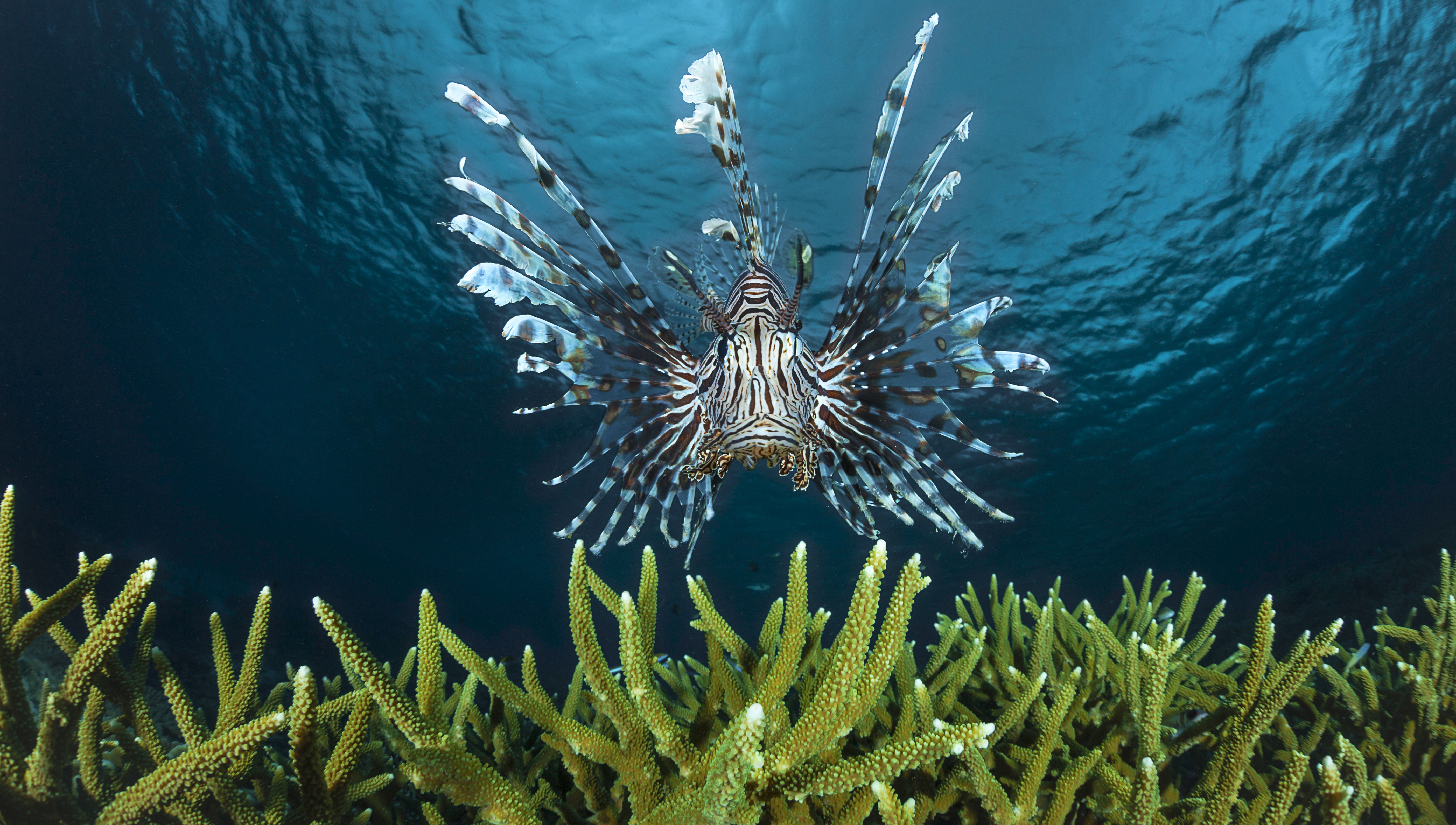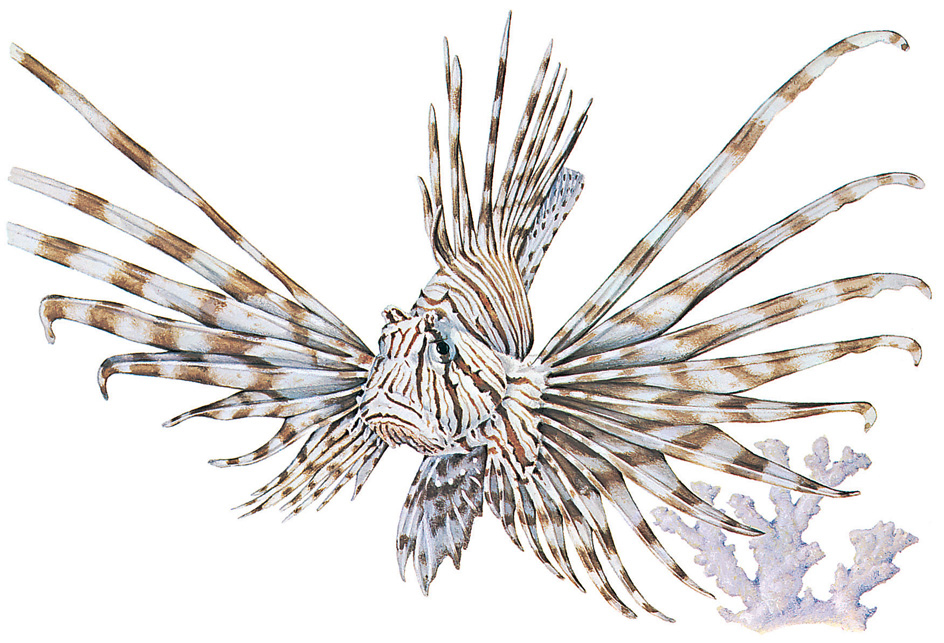Lionfish, also called the firefish, turkeyfish, or zebrafish, is a beautiful reef fish with venomous (stinging) spines. The spines protect the lionfish from attack by predators (hunting animals). Stings can be deadly to other fish and painful for people. Lionfish get their name because their fins and spines somewhat resemble a lion’s mane. There are about a dozen species (kinds) of lionfish. Lionfish are native to shallow coral reefs in the tropical Pacific and Indian oceans, including the Red Sea.



Adult lionfish range in length from 4 to 16 inches (10 to 41 centimeters), depending on the species. Lionfish have alternating light and dark stripes. These stripes provide camouflage that helps the lionfish to blend in with coral reefs. Lionfish are striking for their fanlike pectoral (side) fins. These fins consist of long, fleshy rods called rays. The lionfish’s spines are on its underside and back.
Lionfish are fierce predators. The lionfish usually attacks prey at dawn and dusk by flaring its pectoral fins. The lionfish gradually herds the prey into a corner and then sucks the victim into its mouth. Smaller species eat mostly small crabs and shrimps. Larger species eat mostly small fish, including the young of large species.
Red lionfish are considered an invasive species—that is, an introduced species that spreads quickly and harms native wildlife (see Invasive species). Red lionfish were introduced to the Atlantic Ocean when pet lionfish were released in south Florida in the early 1990’s. The fish have since spread throughout the Caribbean Sea and up the east coast of the United States. The red lionfish is a threat to native reef fish, which have no experience of these invasive predators. A single lionfish can eat about 80 percent of the little fish on a small coral reef in only a few weeks.
